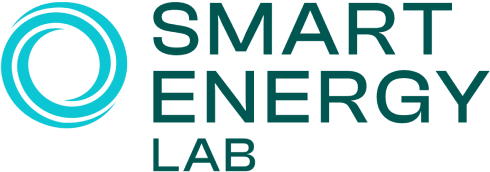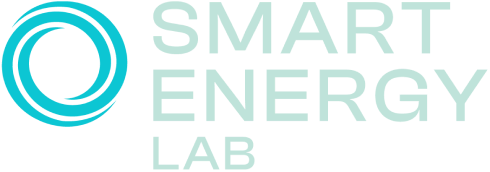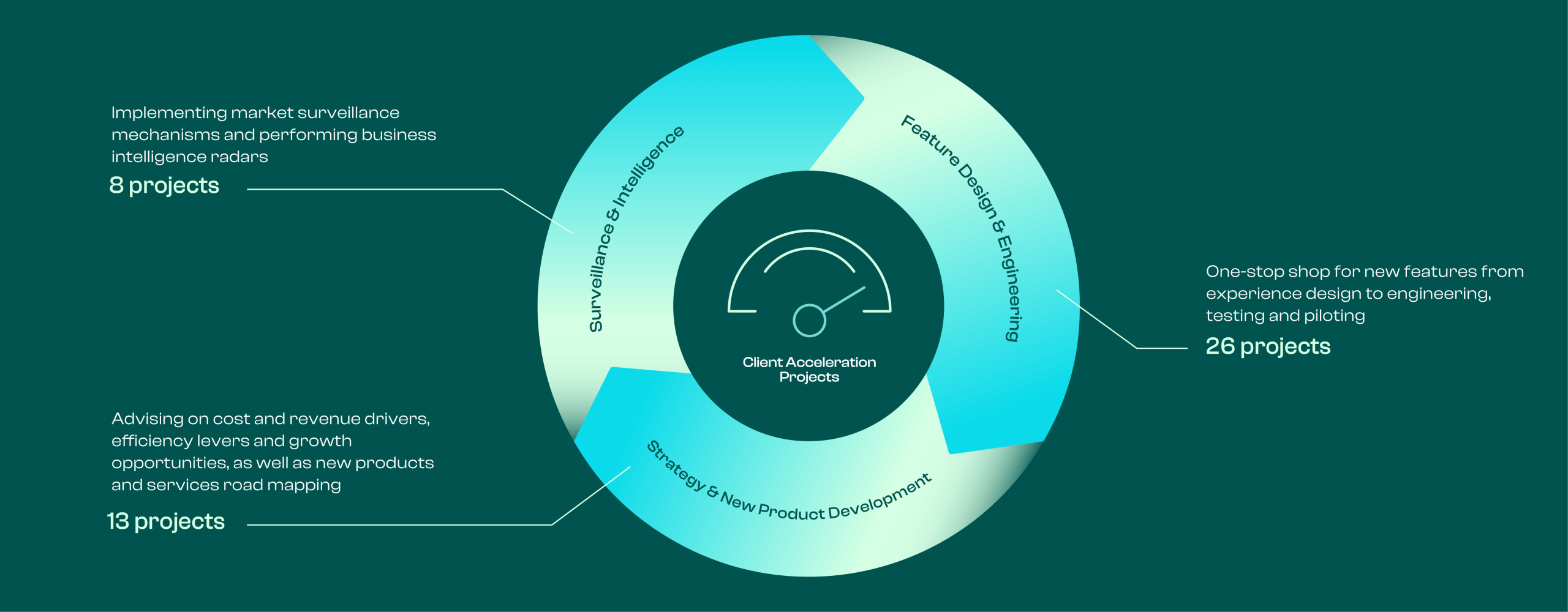Step 1
Real life usability
Focusing on product go-to-market and user adoption as levers to accelerate the business growth of our clients
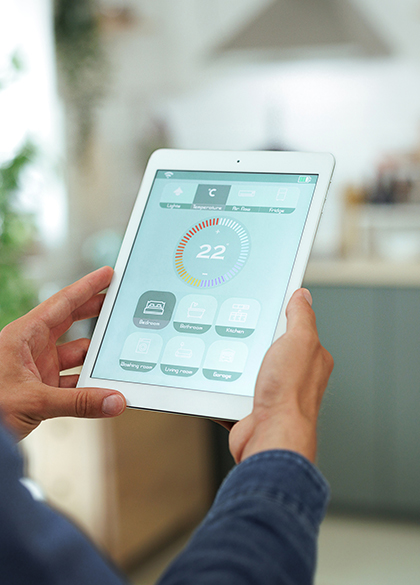
business growth
Step 2
Electric expertise at work
Bringing expertise in electrification and energy management, with a strong commitment to the Energy Transition and an understanding of the challenges faced by energy consumers: distributed energy resources, flexibility and electric mobility
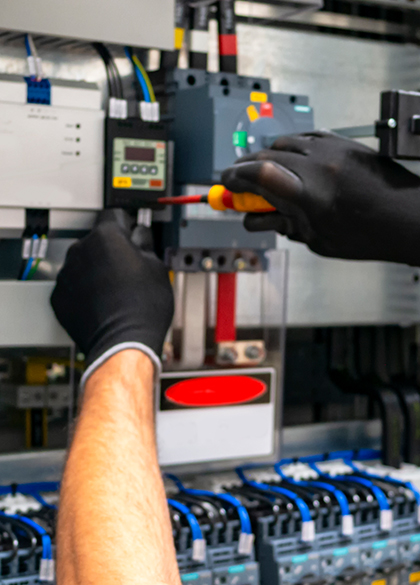
the challenges
Step 3
Tailored solutions
Leveraging our transversal skill set and rich experience — from business analysis to engineering, software development and design — we transform challenges into growth opportunities

opportunities
Step 4
Partners in implementation
Profiting from our robust network of industrial partners, distinguished in the energy sector and academia, enhancing expertise in cutting-edge topics
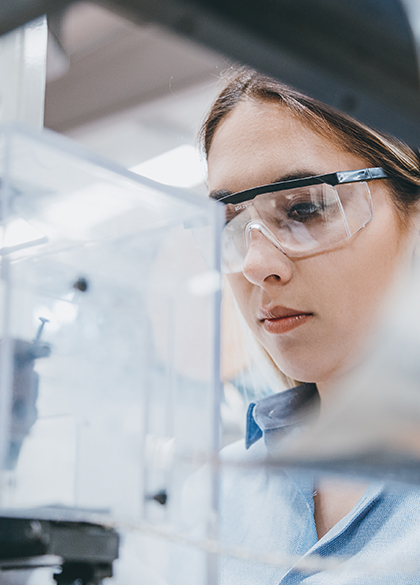
of industrial partners
Capabilities
Strategy & New Product Development:
We support our clients, by advising on cost and revenue drivers for their products and services, identifying efficiency levers and exploring growth opportunities through market expansion analysis or exploration of new business models, as well as developing roadmaps for new products and services
Surveillance and Intel:
We setup and deploy diverse market surveillance mechanisms and business intelligence radars that proactively monitor competition and technology evolution in our client’s business domains, in order to anticipate market trends and support business decisions with structured insight on business and competitor landscape
Feature design and engineering:
We provide a one-stop shop for developing new product features, offering a wide range of competencies, spanning experience design to engineering, from requirements definition, prototyping, and testing to piloting in real client environments
Domains

Gas electrification in residential buildings
Electrification of residential energy demand is a key pillar of the Energy Transition at the residential level. SEL is focused on accelerating this transition, with retrofitting existing buildings being a critical component. There are numerous technical challenges in converting from bottled gas to electric, including the need for specialized installers and managing electrical capacity issues.

Gas electrification in B2B segments
The key drivers for electrification in the B2B sector are the need to lower energy costs and meet ever-stricter ESG (Environmental, Social, and Governance) standards. At Smart Energy Lab, we are committed to guiding companies through this transformation, offering comprehensive support—from developing robust business cases for electrification to redesigning industrial processes to enable the energy transition. While gas continues to play a crucial role in high-heat industrial applications, innovative technologies are rapidly emerging that could provide viable, sustainable alternatives to meet our clients' heating needs in terms of heat electrification.

E-Mobility in condominiums
Smart Energy Lab has developed deep expertise in tackling the challenges of e-mobility within condominium infrastructure. As the electrification of personal transport grows, convenient access to home charging solutions becomes essential for daily battery replenishment. We possess a thorough understanding of the diverse stakeholders within the condominium ecosystem—their unique concerns, priorities, and pain points—and are skilled in deploying the right technologies and strategies to address these challenges. By carefully balancing the needs of residents, property managers, and energy providers, we facilitate the seamless integration of charging infrastructure that benefits all parties involved.

EVSE interfacing
Electric vehicle chargers rely on communication standards like OCPI and OCPP for efficient e-mobility management. However, differing interpretations of these protocols can create compatibility issues. At Smart Energy Lab, we have developed extensive expertise in integrating multiple vendors and solutions into a unified, interoperable system that can be seamlessly managed and coordinated.

Flexibility and Aggregation
Demand-side flexibility and aggregation are key trends driving the Energy Transition. As electricity markets evolve, new opportunities emerge to optimize consumer energy assets and enhance their value to the grid. Smart Energy Lab actively monitors these developments and explores innovative ways to maximize the value of consumer energy resources. We stay updated on market trends and regulations enabling demand-side flexibility at the customer level to ensure our solutions remain cutting-edge, effective, and compliant.

Local energy resources and storage
Local asset OEMs are adopting various communication protocols and standards, such as MODBUS for inverters and EEBUS for heat pumps. Smart Energy Lab has developed extensive expertise in creating drivers and integrators that simplify these complexities, enabling providers to bypass managing multiple protocols directly through intermediary solutions.

Energy Management Systems
Managing consumer assets in an integrated manner can bring added value to the final energy consumer and enhance solution providers’ value proposition and competitive advantage in their commercial offers. Smart Energy Lab is developing extensive work in this domain and is supporting key players in creating smart multi-asset systems.

Local Energy Communities
Local energy communities play a crucial role in advancing the Energy Transition and developing new business models for distributed energy resources. At Smart Energy Lab, we are committed to helping clients optimize their value propositions for these local energy communities, supporting them through all stages, from recruitment to development and operations.

Technology due diligence
At Smart Energy Lab, we perform comprehensive technology reviews and capability assessments of energy management and e-mobility solutions, covering power systems, communications, and control. Our technical due diligence includes initial feature analysis, managing requests for quotations, risk assessment, and conducting pilot tests both in lab facilities and with real clients.
